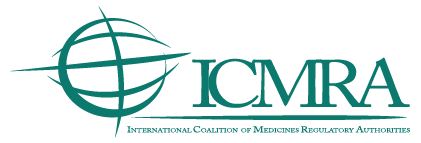History of ICMRA
The proposal to create an ICMRA is an anchored in the recognition that a Heads of Agency (HoA) leadership is needed to address current and emerging human medicine regulatory and safety challenges globally, strategically and in an ongoing, transparent, authoritative and institutional manner.
In May 2012, before the 65th World Health Assembly in Geneva, more than 30 medicines regulatory authorities participated in a seminar promoted by Brazil aimed at stimulating a debate among health officials and the diplomatic community on how to improve cooperation among medicines regulatory authorities. The discussion highlighted the importance of better promoting and coordinating international cooperation among medicines regulatory authorities in order to strengthen dialogue, facilitate the wider exchange of reliable and comparable information, encourage greater leveraging of the resources/work products of other authorities, and promote better informed risk-based allocation of authorities’ resources. These efforts would strengthen the quality, safety and efficacy of medicinal products globally.
These discussions were pursued at meetings of senior executives of several medicines regulatory authorities held on the margins of the International Conference of Drug Regulatory Authorities (ICDRA) in October 2012 and in Manaus at the 7th Heads of Medicines Regulatory Agencies Summit in December 2012. As a result, a consensus has emerged on the desirability of developing an ICMRA to address common issues, such as (but not limited to):
• Growing complexity in manufacturing and distribution supply chains for medicinal product (multi-faceted and globally integrated);
• Regulator’s ability to ensure the safety, quality and efficacy of medicinal products domestically requires knowledge of and confidence in these supply chains;
• Gaps in global regulatory oversight providing opportunities for the tampering and counterfeiting of medicinal products;
• Growing complexity in medicinal products and their ingredients (e.g. new chemical entities and innovative drugs) generating new scientific and regulatory challenges which call for new regulatory processes;
• Growing number of international regulatory initiatives, lacking integration and strategic oversight;
• Continued pressures to control and reduce regulatory public expenditures; and
• Continued industry and political pressures to harmonise and align regulatory practices and activities.

